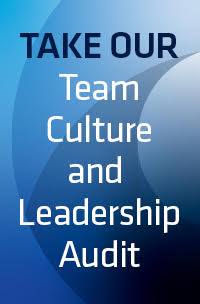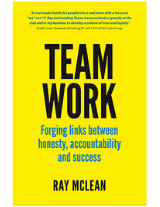One cold June night, as playing coach of a senior football team, I was getting frustrated by the lack of discipline and poor attitude of the team halfway through the training session.
I gave them my observation on training and said ‘look, training isn’t great tonight, let’s jog a cool down lap around the centre square, then we’ll call it quits for the evening’. The players agreed and as we jogged off and got to the first corner of the square, five players cut the corner.

I stopped the whole team and said, ‘did anyone notice anything’ and the response, not surprisingly, was a bunch of blank looking faces. I followed this question with, ‘what was the one instruction I gave the team?’, to which one of the boys replied, ‘we had to run around the square’. I repeated my first question to the group, a couple of players then responding they had noticed a few players cutting the corner.
Consequently, the team had to complete a 400m run. Unfortunately, as a playing coach, this meant me included. After we completed the run, everyone puffing and feeling the sting of lactic acid in our legs, the point was made; if we cut corners now, then we’re going to cut corners on game day.
I posed the following questions to the players:
- Did we want to be a team that cuts corners?
- Did we see how the actions of a few could have consequences for the whole team?
At that point I repeated ‘jog a lap around the centre square, then we’ll call it a night’. As everyone rounded the first corner successfully and then the second, we approached the third corner. A few players who were close to the edge were then pushed in by a couple of teammates. Part as a laugh, but also part to see what I would do.
It was off to the boundary to run another 400m!
As we made our way over to the fence for the 400m run, the walk was accompanied by protests from the players who went in the square and accusations and frustrations directed at those who pushed them in. Yes, the players who went inside the square didn’t deliberately do it, but they went so close to the edge that they put themselves in a position where they could easily cut the corner.
So, it was another 400m run and at this point some very disgruntled players. Again, the call came, ‘jog around the square, then we’ll finish up for the night’. The third time, thankfully, proved to be the last time, because the whole team ran about 10 metres outside of the centre square. Any player who would get close was pulled back in by their teammates to ensure we didn’t have to suffer the consequences again.
As we had a stretch and cooled down, we debriefed what had just happened. I decided to ask the players; what did we learn from that?
These were their key takeaways:
- The realisation that successful teams don’t cut corners
- That as a collective we own the standards of the team
- If the coach wanted to be considered part of the team and setting standards, they had to be the first one leading the way. It reinforced a key leadership point to me that you can’t ask somebody to do something that you’re not prepared to do yourself.
From that evening forward, we used the term ‘around the square’ as pour reference point to supporting and holding each other accountable to higher standards.
- Do you have any centre square examples within your team?
- What impact does this have on the rest of the team?
- Does the team suffer any consequences because of it?
Gavin joined Leading Teams in November 2017, coming from an international career in the sport and corporate worlds. He is a Facilitator based in Melbourne.
Learn more about Gavin.



